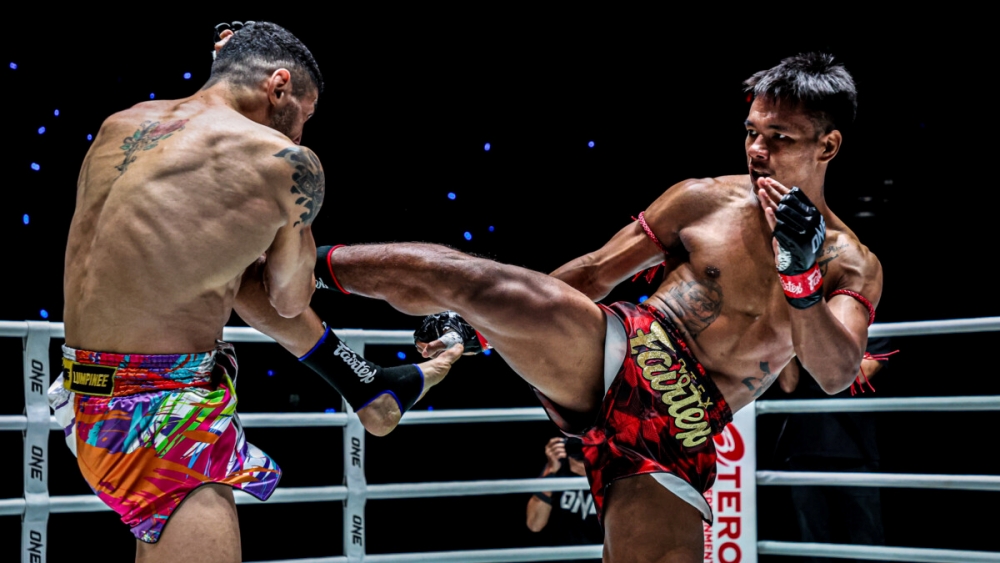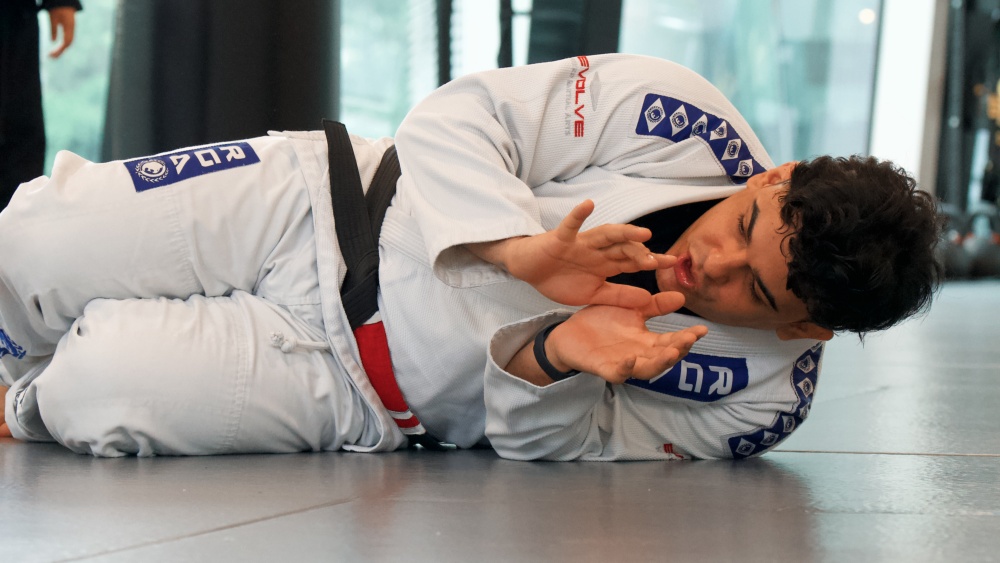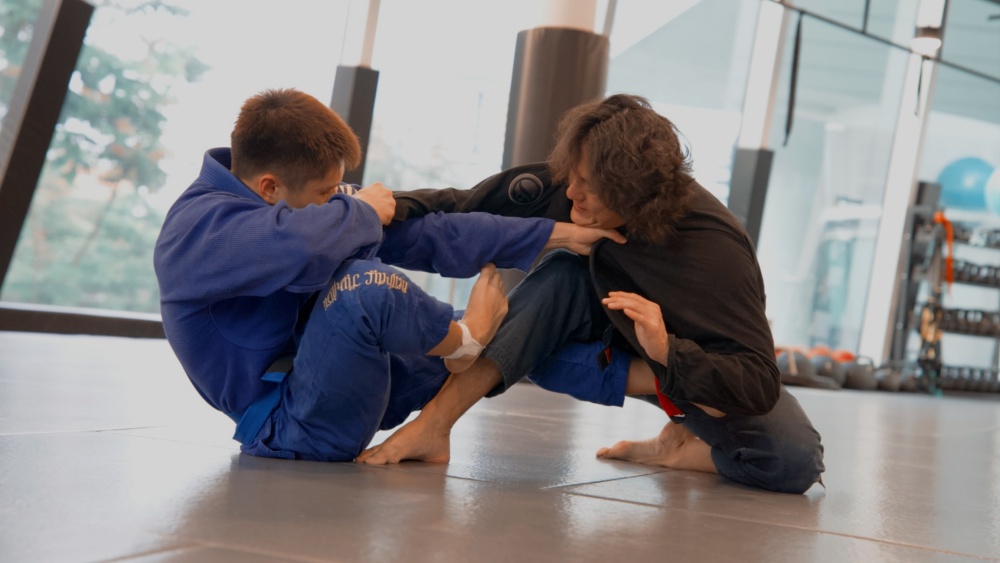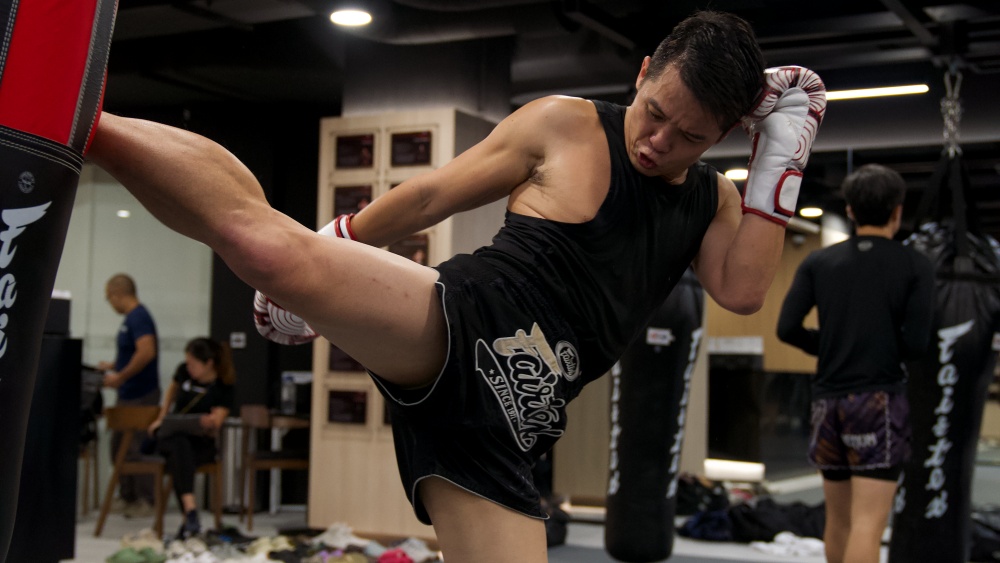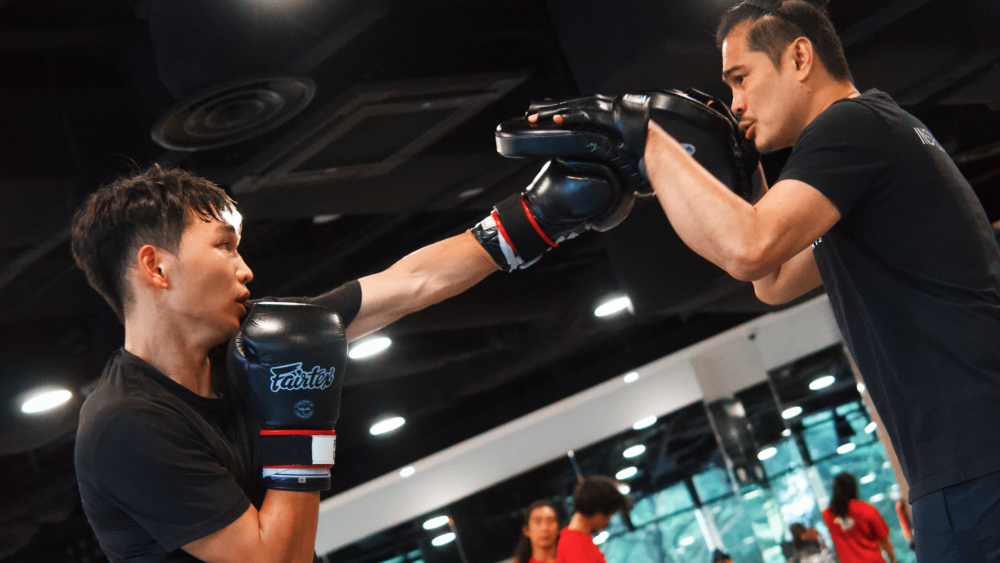In Muay Thai, if you catch an opponent’s leg, you are only allowed to take a maximum of two steps before any technique you deliver onto your opponent is classified as a foul. It is easily one of the most common rules broken, often accidentally, in the ring and it happens so often that just about every fan has seen a referee break an exchange mid-fight, hold up two fingers, and exclaim “Two steps!” as a warning that a fighter is at risk of having a point deducted if they break the rule again.
Most of today’s fans and fighters don’t realize that the two-step rule is a relatively recent addition to the Muay Thai playbook, for all of Muay Thai’s extensive history and up until as recently as the 1990s, fighters could hold an opponent’s leg for as long as they wanted without any risk of a point deduction. That was, of course, until the use of “The Plough,” Muay Thai’s most dangerous technique, changed things.
In this article, we’re going to explain what the Muay Thai Plough was and why it was considered too dangerous, even in a sport that allows one fighter to knee and elbow their opponent. Then we’ll continue to explain the finer points of the Two Step rule, including what movements do and don’t constitute a foul so that you have the greatest chance of sweeping your opponent the next time you catch their leg.
What Was The Muay Thai Plough
Ploughing was the act of catching an opponent’s leg, charging them across the ring, and throwing them against the ropes with the intention of using them to slingshot them back into a heavy kick or knee. It was a popular trick and was used so often that some fighters became known for their ploughing prowess, including golden era legend, Namkabuan, who was given the nickname “The Ploughman” and “The Lord of Ploughing” by the many fans who loved watching him utilise this technique.
Why Was It Banned?
Without any limitations on the number of steps a fighter could take with their opponent’s leg trapped under their arm, ploughing often resulted in some devastating knockouts. Unsurprisingly, the plough also resulted in a number of horrific injuries when fighters were accidentally ploughed over the ropes, or an attacking fighter misjudged their jumping attack and sent themselves hurtling to the concrete floor outside of the ring. The plough was eventually banned following a number of career-ending incidences, including a failed plough attempt by Rainbow Sor. Prantalay who crashed out of the ring with an injury that required an extended recovery period.
The “Two-Step” Rule
To end the act of ploughing, Muay Thai introduced the “Two Step” rule which significantly restricted a fighter’s ability to hurl their opponent into the ropes. The rule meant that a fighter could not take any more than two steps forward without throwing a strike or attempting a sweep and because of this, it became far more difficult for a fighter to use the ropes to slingshot their opponent. Even if they did have the right timing and distance to pull it off, it became far more difficult to generate the momentum needed for a fighter to accidentally get sent crashing to the concrete outside of the ring.
The Fine Print: What Is And Isn’t A Foul?
The two-step rule was implemented as a direct response to the plough. It wasn’t added to restrict a fighter’s ability to use any other Muay Thai weapons or techniques. Therefore, by reading the fine print of the Muay Thai rulebook, you can discover a number of ways to get around the two-step rule in order to maximize your effectiveness after you’ve caught your opponent’s leg (but without putting anyone at risk of falling out of the ring!)
The WBC Muay Thai rulebook defines the two-step foul as:
“Catching the opponent’s leg and pushing forwards more than two (2) steps without using any weapon.”
There are two distinct implications here to note.
1) A Foul Will Only Occur If You Take Two Steps Forward

This means that there is no limitation on taking backward or lateral steps after you have caught an opponent’s kicking leg. Therefore, if you are facing an opponent skilled at fighting from the ropes, nothing stops you from pulling them back into the center of the ring. There is also nothing stopping you from yanking an opponent backward and building as much momentum as you want in order to pull them onto a sweep or strike.
2) The Step Count Resets After A Weapon Is Thrown
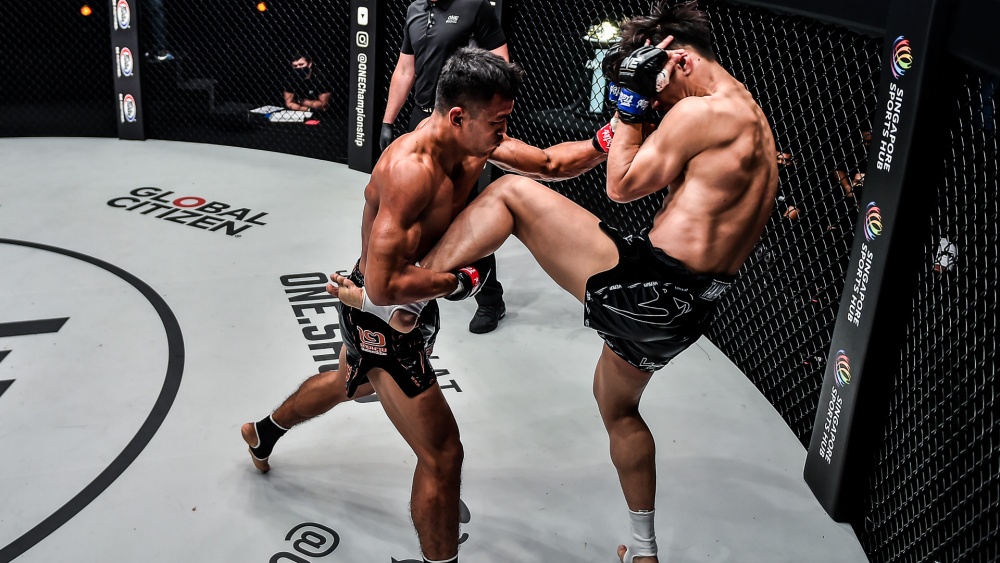
This means that if you take two steps and then attempt to sweep your opponent, but they manage to keep their balance, then you are able to take another two steps and try again, or you can mix it up and use another weapon. There is no limit to the amount of forward steps you can take as long as every second step is followed by a strike. The rationale behind this is that you will be pausing your forward momentum every time you strike your opponent and won’t be building speed with every successive strike.
Conclusion
The plough was one of the most dangerous techniques in Muay Thai history. Catching an opponent’s leg, charging them across the length of the ring, and sling-shotting them off of the ropes was the perfect setup for a highlight reel knockout, but also, a recipe for disaster. The two-step rule was introduced to the Muay Thai ruleset specifically to protect fighters from the career-ending injuries that occurred when the plough went awry. It wasn’t designed to limit a fighter’s ability to pull off a full range of the sport’s techniques and so, a complete understanding of the rule reveals a number of ways to maximize your chances of sweeping an opponent after catching their leg.
You may also like:





